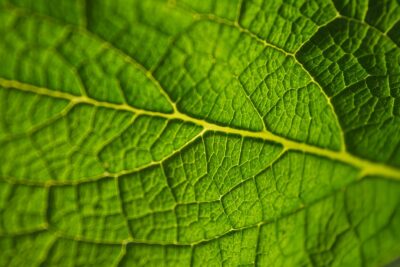
Exploring the Role and Function of Aerial Roots in Succulent Plants

Aerial roots are a fascinating adaptation found in many plants, including succulents. These specialized roots grow above the ground and serve various purposes, such as providing support, absorbing moisture from the air, and even aiding in the propagation of the plant. Understanding the role and function of aerial roots in succulent plants can provide valuable insights into their unique survival strategies and help us appreciate their incredible resilience in harsh environments.
We will delve into the world of succulent plants and explore the role and function of aerial roots in these remarkable organisms. We will discuss the different types of aerial roots found in succulents, their structure and anatomy, as well as their various functions. Additionally, we will explore how succulent plants have evolved to thrive in arid conditions and how aerial roots contribute to their ability to store and conserve water. By gaining a deeper understanding of aerial roots in succulent plants, we can gain a greater appreciation for the incredible adaptability and resilience of these unique plant species.
- Aerial roots in succulent plants help in absorbing moisture from the air
- These roots provide additional support to the plant
- Aerial roots can store water, helping the plant survive in arid conditions
- Aerial roots can also help in nutrient absorption from the air
- These roots play a role in stabilizing the plant in windy conditions
- Aerial roots can aid in the propagation of succulent plants through vegetative reproduction
- Some succulent plants use aerial roots to anchor themselves to other structures
- Aerial roots in succulent plants may have a role in temperature regulation
- These roots can help the plant adapt to changing environmental conditions
- Frequently Asked Questions
Aerial roots in succulent plants help in absorbing moisture from the air
Aerial roots play a crucial role in the survival of succulent plants by aiding in the absorption of moisture from the air. These specialized roots are commonly found in epiphytic succulents, which are plants that grow on other plants or objects rather than directly in the ground.
The primary function of aerial roots is to capture and absorb water vapor from the atmosphere. This adaptation is particularly vital for succulents that inhabit arid or semi-arid regions where water is scarce. By absorbing moisture from the air, succulent plants can supplement their water intake and withstand long periods of drought.
Aerial roots have unique structural features that enable them to efficiently absorb moisture. They are typically covered in a layer of tiny hairs or scales, which increase their surface area and enhance their capacity to capture water droplets. Additionally, these roots often possess specialized cells called trichomes that are capable of absorbing water vapor directly from the air.
Furthermore, aerial roots also serve as a means of support for succulent plants. As epiphytes, these plants rely on their aerial roots to anchor themselves onto trees, rocks, or other surfaces. This allows them to access sunlight and nutrients without being rooted in the ground.
 Non-Cacti Succulents: Identifying Succulent Varieties beyond Cacti
Non-Cacti Succulents: Identifying Succulent Varieties beyond CactiIt is important to note that not all succulent plants possess aerial roots. Some succulents have adapted to survive in dry environments by storing water in their leaves or stems, eliminating the need for specialized roots.
Aerial roots play a vital role in the survival of succulent plants, allowing them to absorb moisture from the air and serve as a means of support. These adaptations are essential for succulents to thrive in arid conditions and ensure their continued growth and development.
These roots provide additional support to the plant
Succulent plants are known for their unique adaptations to survive in harsh environments. One of these adaptations is the presence of aerial roots, which play a crucial role in providing additional support to the plant.
Aerial roots are roots that grow above the ground, rather than in the soil. They are typically found in succulent plants that inhabit arid regions, where the soil conditions may not be favorable for root growth.
Unlike traditional underground roots, aerial roots have specialized structures and functions that enable them to serve as an anchor and support system for the plant. These roots are often thick and fleshy, allowing them to store water and nutrients, which are essential for the survival of succulent plants in dry environments.
One of the primary functions of aerial roots is to provide stability to the plant. Succulent plants, such as cacti, have a unique growth habit that involves elongating and expanding their stem to store water. This can make them top-heavy and prone to tipping over. However, with the presence of aerial roots, the plant can establish a stronger connection to the ground, preventing it from falling over and ensuring its stability.
 Find the Perfect Succulent Plant Identifier for Easy Identification
Find the Perfect Succulent Plant Identifier for Easy IdentificationAdditionally, aerial roots also have the ability to absorb moisture from the air. In arid regions where water is scarce, this adaptation allows succulent plants to extract moisture from the atmosphere, supplementing their water intake and increasing their chances of survival.
Furthermore, aerial roots can aid in nutrient uptake. These roots have specialized structures, such as root hairs or velamen, that enhance their ability to absorb nutrients from the surrounding environment. This is particularly important in nutrient-poor soils, where succulent plants rely on aerial roots to obtain the essential elements they need for growth and development.
Aerial roots play a vital role in succulent plants by providing additional support, stability, and access to water and nutrients. Their unique adaptations enable these plants to thrive in harsh environments where traditional underground roots may not be sufficient. Understanding the role and function of aerial roots can deepen our appreciation for the incredible resilience and survival strategies of succulent plants.
Aerial roots can store water, helping the plant survive in arid conditions
Aerial roots play a vital role in the survival of succulent plants, especially in arid environments. These specialized roots have adapted to store water, which is crucial for the plant's ability to thrive in dry conditions.
1. Water absorption: One of the primary functions of aerial roots is to absorb moisture from the air. Unlike regular roots that primarily absorb water from the soil, aerial roots have the ability to absorb moisture directly from the atmosphere. This unique adaptation allows succulent plants to supplement their water intake, ensuring their survival in regions with limited water availability.
2. Water storage: Aerial roots are designed to store water within their specialized structures. These roots are typically thicker and have a spongy texture, allowing them to retain a significant amount of water for extended periods. The stored water acts as a reserve, sustaining the plant during periods of drought or when access to water is scarce.
 Find Your Perfect Succulent with Our PDF Identification Chart
Find Your Perfect Succulent with Our PDF Identification Chart3. Nutrient uptake: In addition to storing water, aerial roots also play a role in nutrient uptake. These roots have the ability to absorb essential nutrients, such as nitrogen and potassium, from the air. This adaptation allows succulent plants to extract nutrients from the environment, compensating for the nutrient-poor soil often found in arid regions.
4. Anchorage and support: Another function of aerial roots is to provide additional support and anchorage for the plant. Succulent plants often grow in rocky or sandy terrains, where the soil may be loose or unstable. Aerial roots help stabilize the plant by attaching to rocks or other structures, preventing it from toppling over in strong winds or when the soil erodes.
Overall, the role and function of aerial roots in succulent plants are crucial for their survival in arid conditions. These specialized roots enable the plants to absorb moisture from the air, store water, extract nutrients, and provide stability. By understanding the significance of aerial roots, we can appreciate the remarkable adaptations that allow succulent plants to thrive in challenging environments.
Aerial roots can also help in nutrient absorption from the air
While aerial roots are commonly associated with their primary function of providing support and stability to plants, they also play a crucial role in nutrient absorption. Succulent plants, known for their ability to store water in their leaves, stems, or roots, utilize aerial roots as an additional means of obtaining essential nutrients from the air.
These specialized roots, often found dangling or hanging from the stems of succulent plants, have adapted to absorb moisture and nutrients from the atmosphere. Unlike traditional roots that primarily extract nutrients from the soil, aerial roots have evolved to absorb moisture and nutrients directly from the surrounding air.
How do aerial roots absorb nutrients?
 Unveiling the Truth Behind Leather Petal Succulents: Real or Myth?
Unveiling the Truth Behind Leather Petal Succulents: Real or Myth?Aerial roots possess specialized structures called trichomes, which are tiny hair-like projections on the root surface. These trichomes increase the surface area of the root, allowing for enhanced absorption of moisture and nutrients from the air. The trichomes also help in trapping suspended particles such as dust and organic matter, which can serve as additional sources of nutrients for the plant.
The role of epiphytic bacteria
In addition to their physical adaptations, aerial roots also form a symbiotic relationship with certain species of bacteria. These epiphytic bacteria colonize the root surface and aid in the absorption of atmospheric nutrients. The bacteria convert atmospheric nitrogen into a form that the plant can utilize, enhancing the plant's overall nutrient uptake.
Enhancing plant resilience
The ability of succulent plants to absorb nutrients through aerial roots contributes to their resilience in challenging environments. In arid regions or areas with poor soil quality, these plants can rely on their aerial roots to supplement their nutrient requirements. This adaptation allows succulent plants to thrive in conditions where other plants may struggle to survive.
Conclusion
Aerial roots in succulent plants serve a dual purpose, providing structural support and enabling nutrient absorption from the air. These specialized roots, with their unique adaptations and symbiotic relationships with bacteria, allow succulent plants to thrive in diverse and challenging environments. Understanding the role and function of aerial roots further deepens our appreciation for the resilience and survival strategies of these remarkable plants.
 Discover the Fascinating Succulent Resembling an Artichoke
Discover the Fascinating Succulent Resembling an ArtichokeThese roots play a role in stabilizing the plant in windy conditions
Aerial roots are a unique feature found in many succulent plants. While traditional roots grow underground, these specialized roots grow above the ground, extending from the stem or branches of the plant. Although they may appear unusual, aerial roots serve a crucial function in the survival of succulent plants.
One of the primary roles of aerial roots is to provide stability to the plant, especially in windy conditions. As succulent plants often grow in arid and semi-arid regions, they are exposed to strong winds that can potentially uproot or damage them. By growing aerial roots, succulent plants are able to anchor themselves firmly to the ground, preventing them from being toppled over by gusts of wind.
These roots are typically long and thick, with a strong and fibrous structure. This design allows them to penetrate the soil deeply, creating a strong foundation for the plant. Additionally, the presence of numerous aerial roots distributed throughout the plant's stem or branches enhances its overall stability.
Furthermore, the structure of aerial roots enables succulent plants to absorb moisture and nutrients from the air. As these plants often grow in harsh environments with limited access to water and nutrients in the soil, they have evolved to adapt and optimize their resource acquisition. Aerial roots have the ability to absorb moisture from the air through specialized structures called velamen.
The velamen is a spongy tissue that covers the aerial roots, acting as a sponge to absorb atmospheric moisture. This unique adaptation allows succulent plants to supplement their water intake, particularly during dry periods or in locations with low rainfall. By absorbing moisture from the air, succulent plants can maintain their hydration levels and thrive even in arid conditions.
In addition to their stabilizing and moisture-absorbing functions, aerial roots can also help with nutrient uptake. The velamen tissue not only absorbs water but also traps particles in the air, including dust and organic matter. These trapped particles contain essential nutrients that the plant can extract and use for its growth and development.
Aerial roots in succulent plants serve a multi-faceted role. They provide stability by anchoring the plant to the ground, allow for moisture absorption from the air, and aid in nutrient uptake. These unique adaptations make succulent plants resilient in their natural habitats, enabling them to thrive in challenging environmental conditions.
 Discover Beautiful Flowering Succulents: Learn How to Identify Them
Discover Beautiful Flowering Succulents: Learn How to Identify ThemAerial roots can aid in the propagation of succulent plants through vegetative reproduction
Succulent plants, known for their ability to store water in their fleshy leaves, stems, and roots, have a unique adaptation that allows them to reproduce through vegetative means. This adaptation comes in the form of aerial roots, which play a crucial role in the propagation process.
Aerial roots, as the name suggests, are roots that grow above the ground, typically originating from the stem or leaf nodes of the succulent plant. These roots serve various functions, including nutrient absorption, water uptake, and structural support. However, one of their most notable roles is aiding in the vegetative reproduction of succulent plants.
1. Cloning through adventitious root formation:
One of the primary ways aerial roots contribute to the propagation of succulent plants is by forming adventitious roots. Adventitious roots are roots that develop from non-root tissues, such as stems or leaves, instead of the typical root initiation zone. These roots can emerge from the aerial roots, allowing the plant to produce clones of itself.
2. Enhanced nutrient uptake:
Aerial roots also facilitate nutrient absorption for the succulent plant. By extending above the ground, they have greater access to nutrients present in the air, such as moisture, dust particles, and organic compounds. This enhanced nutrient uptake can boost the plant's growth and overall health, making it more capable of producing viable offspring.
 Is a Cactus a Type of Succulent Flower? Understanding the Relationship
Is a Cactus a Type of Succulent Flower? Understanding the Relationship3. Improved water retention:
Another advantage of aerial roots in succulent plants is their ability to aid in water retention. These roots have specialized structures, such as velamen, which are spongy coverings that help them absorb and retain moisture. This adaptation is particularly beneficial in arid environments, where water is scarce. By effectively retaining water, succulent plants can survive in harsh conditions and ensure the successful establishment of propagated offspring.
4. Structural support:
In addition to their reproductive roles, aerial roots also provide structural support to succulent plants. As these plants often have thick and fleshy leaves and stems, they can become top-heavy. Aerial roots help stabilize the plant by anchoring it to the ground or other surfaces, preventing it from toppling over. This support is crucial during the propagation process, as it ensures that the developing offspring remain firmly attached to the parent plant until they are ready to establish themselves independently.
Aerial roots in succulent plants serve a multifaceted role, with one of their primary functions being the facilitation of vegetative reproduction. These roots enable the plants to clone themselves through the formation of adventitious roots. Additionally, they enhance nutrient uptake, improve water retention, and provide structural support. Understanding the role and function of aerial roots in succulent plants is crucial for both enthusiasts and cultivators who wish to propagate these fascinating and resilient plants.
Some succulent plants use aerial roots to anchor themselves to other structures
When it comes to succulent plants, their incredible ability to adapt to various environments never ceases to amaze us. One fascinating adaptation that some succulents have developed is the use of aerial roots. These specialized roots serve a crucial role in the plant's survival and have unique functions that set them apart from regular underground roots.
 Exploring Spotted Succulents: A Guide to Fascinating Leaf Patterns
Exploring Spotted Succulents: A Guide to Fascinating Leaf PatternsAnchor and support
Aerial roots in succulent plants play a significant role in anchoring the plant to other structures. These roots grow from the stem or branches of the plant and extend outward into the air, seeking out a suitable surface to cling onto. By latching onto structures such as rocks, trees, or even walls, these aerial roots provide stability and support, preventing the plant from toppling over or being easily uprooted.
Water and nutrient absorption
While most plants rely on their underground roots to absorb water and nutrients from the soil, succulent plants with aerial roots have adapted to acquire these essential resources from the air. These specialized roots possess unique structures, such as velamen, which enable them to absorb moisture and nutrients directly from the surrounding environment. This adaptation is particularly advantageous in arid or rocky habitats where the availability of water and nutrients in the soil may be limited.
Protection from desiccation
Another crucial function of aerial roots in succulent plants is their ability to protect the plant from desiccation. These roots are covered in a thick layer of specialized cells called velamen, which acts as a barrier against excessive moisture loss. The velamen cells have a spongy texture that absorbs and retains moisture, preventing the plant from drying out in dry and arid conditions. This adaptation allows succulent plants with aerial roots to thrive in environments with low humidity levels.
Adaptation to epiphytic growth
Aerial roots are particularly common in succulent plants that have adapted to an epiphytic lifestyle. Epiphytes are plants that grow on the surface of other plants, using them as a support structure without deriving nutrients from the host plant. Succulents with aerial roots have evolved this adaptation to anchor themselves onto trees or other structures while obtaining moisture and nutrients from the air and rainfall. This unique growth strategy allows them to thrive in environments where the soil may be scarce or unsuitable for root development.
Aerial roots in succulent plants serve a vital role in their survival and growth. From providing support and stability to absorbing water and nutrients from the air, these specialized roots are a remarkable adaptation that enables succulents to thrive in diverse and challenging environments.
Aerial roots in succulent plants may have a role in temperature regulation
When it comes to succulent plants, their unique adaptations never fail to fascinate plant enthusiasts. One such remarkable adaptation is the presence of aerial roots. These aerial roots, also known as adventitious roots, play a crucial role in the survival and functioning of succulent plants.
 Identifying Tube-Like Succulents: A Shape Guide
Identifying Tube-Like Succulents: A Shape GuideTemperature Regulation: One of the primary functions of aerial roots in succulent plants is temperature regulation. Succulents are often found in arid and hot environments, where temperature fluctuations can be extreme. Aerial roots help these plants to maintain an optimal temperature range by dissipating heat and providing a cooling effect.
Unlike conventional roots that remain underground, aerial roots emerge from the stem or branches of the succulent plant, exposing them to the surrounding air. This exposure allows the aerial roots to absorb heat from the plant's tissues and release it into the atmosphere, preventing overheating.
Improved Air Circulation: In addition to temperature regulation, aerial roots also contribute to improved air circulation around the succulent plant. The presence of these roots creates channels through which air can flow, promoting better ventilation and reducing the risk of stagnant air pockets.
This enhanced air circulation is beneficial for succulent plants as it helps in the exchange of gases, such as carbon dioxide and oxygen, which are vital for photosynthesis. Additionally, improved airflow can help prevent the buildup of moisture on the plant's surface, reducing the risk of fungal or bacterial infections.
Increased Water Absorption: While aerial roots primarily serve as temperature regulators and promote air circulation, they can also assist in water absorption. Succulent plants, as their name suggests, have adapted to thrive in dry environments with limited water availability.
Aerial roots have specialized structures, such as velamen, which can absorb moisture from the air. This adaptation allows succulent plants to supplement their water intake, particularly during periods of drought or low rainfall. By absorbing moisture from the atmosphere, aerial roots help succulent plants to maintain their succulence and prevent dehydration.
Aerial roots in succulent plants have a multifunctional role, including temperature regulation, improved air circulation, and increased water absorption. These adaptations contribute to the survival and thriving of succulent plants in arid and challenging environments. Understanding the importance of aerial roots enhances our appreciation for the incredible adaptations that nature has developed to ensure the success of these fascinating plants.
 Unraveling the Mystery Behind the Name "Succulents"
Unraveling the Mystery Behind the Name "Succulents"These roots can help the plant adapt to changing environmental conditions
Aerial roots in succulent plants play a crucial role in their survival and adaptation to changing environmental conditions. These unique structures serve various functions, allowing the plants to thrive in their natural habitats.
Enhanced Water Absorption
Aerial roots enable succulent plants to absorb moisture from the air, which is particularly beneficial in arid regions where water is scarce. These roots have specialized cells that can absorb and retain moisture, helping the plant to supplement its water requirements.
Nutrient Uptake
In addition to water absorption, aerial roots also facilitate the uptake of essential nutrients from the atmosphere. These roots have tiny openings called stomata that allow the plants to absorb carbon dioxide, which is necessary for photosynthesis, and other nutrients present in the air.
Support and Anchorage
Aerial roots provide structural support and anchorage to succulent plants. Due to their extended nature, these roots help stabilize the plant and prevent it from falling over or being uprooted by strong winds or heavy rainfall.
Temperature Regulation
Succulent plants often grow in environments with extreme temperatures. Aerial roots aid in temperature regulation by acting as insulation for the plant. These roots can trap air around them, creating a protective layer that reduces heat loss during cold periods and minimizes heat absorption during hot periods.
Additional Functions
Aside from their primary roles, aerial roots may also serve additional functions in succulent plants. They can assist in vegetative propagation, allowing the plant to reproduce by forming new roots when in contact with the ground. Furthermore, some aerial roots may have adaptations for storing nutrients or providing a protective barrier against predators.
Aerial roots in succulent plants have diverse functions that contribute to the plant's survival and adaptation. By enhancing water absorption, facilitating nutrient uptake, providing support and anchorage, regulating temperature, and potentially serving additional purposes, these roots play a crucial role in enabling succulent plants to thrive in challenging environments.
Frequently Asked Questions
1. What are aerial roots?
Aerial roots are roots that grow above the ground, typically originating from the stem or branches of a plant.
2. What is the function of aerial roots in succulent plants?
Aerial roots in succulent plants serve various functions, including water absorption, nutrient uptake, and anchorage.
3. How do aerial roots help succulent plants survive in arid conditions?
Aerial roots in succulent plants have specialized structures, such as velamen tissue, that enhance water absorption from the air and aid in water storage.
4. Can aerial roots be propagated to grow new succulent plants?
Yes, aerial roots can be propagated by carefully cutting them from the parent plant and planting them in suitable growing medium.
If you want to read more articles similar to Exploring the Role and Function of Aerial Roots in Succulent Plants, you can visit the Identification category.






You Must Read